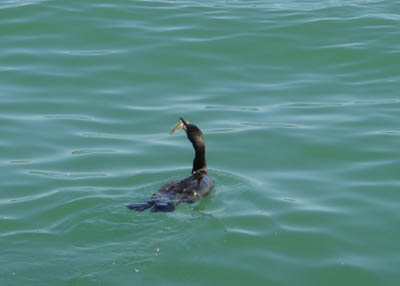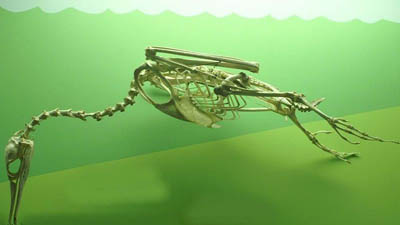Double-crested cormorants are large waterbirds whose summer habitat includes lakes and inland waterways. They’re quite widely distributed across North America, ranging from the Aleutian Islands in Alaska down to Florida and Mexico.
Like other cormorants, they primarily eat fish which they hunt by swimming and diving. And they’re definitely built for speed and efficiency in the water. As you can see, this one moves quite nimbly when going after his prey:
Cormorants have a short, stocky body with webbed feet and a very long neck. This enables them to quickly dart through the water in pursuit of smaller fish, which they snatch with a small hook on the end of their beaks.
Here’s a shot of our friend again just after snaring a juicy morsel:
But his success as an aquatic hunter is not always welcome among many Great Lakes residents. Cormorants are voracious consumers of bait fish such as round gobies. This has adversely impacted the perch, walleye and bass populations – much to the chagrin of sport fisherman throughout the region.
And to add insult to injury, cormorants are notoriously noisy and destructive wherever they establish their highly populated breeding grounds. This has led to increasing efforts to cull the cormorant population in several parts of the Great Lakes basin.
But even if you’re not a fan of our new visitor, you can’t help but admire his talents. In fact, when you see him in action, he looks like a throwback to some prehistoric time when real lake monsters once had free reign over the large inland sea that covered most of North America.
And when you look at his skeleton, you’re even more tempted to think that they still exist:

